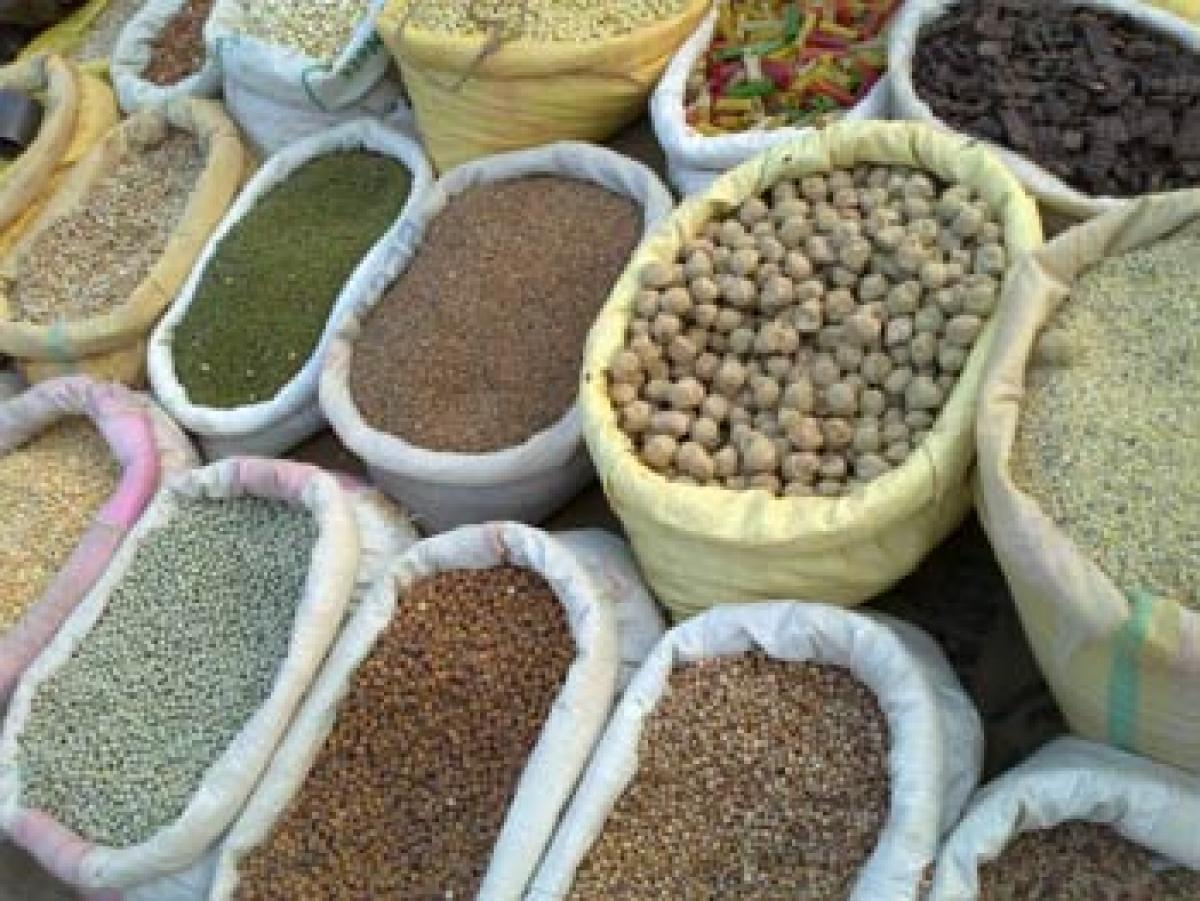Live
- Deep State behind Adani crisis?
- Collector inspects GGH; asks staff to provide better medicare to poor
- Zero Case: A Saga of Eradication of Polio in India
- Cancel PPAs with Adani companies, demands CPI
- Nuclear saber rattling in Russia-Ukraine war
- AKNU V-C attends GEO India-2024 conference
- SSSG student selected for national painting contest
- Focus on studies, avoid societal vices: SP Krishnakanth
- Naredco donates Rs 75L to CMRF
- Capacity building workshop held
Just In

The production of cereals is projected to fall 41 percent and pulses 11 percent, as agricultural growth in Maharashtra is set to decline 2.7 percent for the year 2015-16, after deficient rainfall in 278 of 355 talukas, according to the Economic Survey of Maharashtra 2015-16.
The production of cereals is projected to fall 41 percent and pulses 11 percent, as agricultural growth in Maharashtra is set to decline 2.7 percent for the year 2015-16, after deficient rainfall in 278 of 355 talukas, according to the Economic Survey of Maharashtra 2015-16.
In 2015, rainfall in Maharashtra was 60 percent of the average, and so the state’s farmed area for the winter (Rabi) crop declined 16 percent between October 2015 and March 2016, according to the Survey. This is the second successive year of below-average rainfall.
The lack of rain has created crises in other states as well: 246 of India’s 688 districts across 10 states or 35 percent of India’s area are now officially drought-hit, according to an answer provided in the Lok Sabha on March 10.
Maharashtra is India’s second-most important agricultural state (after Uttar Pradesh), with 52.7 percent (61 million) of its 112 million people dependent on the rural economy. Overall, its gross state domestic product (GSDP) is India’s largest at Rs 15.7 lakh crore ($236 billion), of which 10 percent comes from agriculture.
The only bright spot in the state’s stressed economy is the services sector, employing 44 million people and likely to grow 10.8 percent, followed by industry at 5.9 percent, the Survey said.
In 2015, Maharashtra received 59.4 percent of its average rainfall - 678.5 mm against the average 1,131 mm). Of 355 talukas (except Mumbai and its suburban district), rainfall was “deficient” which means that the districts received rainfall less than 50 percent to 70 percent of the average – in 278 talukas, as we said earlier, average in 75 and excess in two (Akole and Mahabaleshwar).
The sparse rainfall has deterred sowing. During the 2015 kharif (April to October) season, 141.46 lakh hectares was sowed, six percent less than the previous year (150.97 lakh hectares). With rains failing in the kharif season, farmed area during the rabi season is expected to decline 16 percent over the previous year.
The production of cereals and pulses decreased 18.7 percent and 47 percent, respectively, in 2014-15. This year, 2015-16, the production of cereals is expected to decline 41 percent to 1.05 lakh tonnes from 1.81 lakh tonnes, while oilseeds are expected to grow nine percent.
As many as 27,723 villages of 43,000 have now been declared drought-hit, and on an average, nine farmers killed themselves every day in 2015, IndiaSpend reported last week.
Water conservation, irrigation projects underway, but state irrigation record is not good The government has spent Rs.1,544 crore to build water-conservation projects such as ponds, wells, check dams and drip irrigation – in 6,205 villages across 34 districts as part of a programme to end water scarcity between 2014 and 2016.
By the end of October 2015, 130,761 projects in these villages were complete, and 34,989 more were under construction, according to the Survey.
It is clear that most of the irrigation potential created meaning, the land that can theoretically or potentially be irrigated with new facilities–has been through major irrigation projects.
Across India, with every Five-Year Plan, the gap between irrigation potential created and utilised steadily increased, as IndiaSpend reported earlier. The irrigation potential utilised water used for farming as percentage of irrigation capacity created was 85 percent from 1985 to 1992, falling to 29 percent by 2007.
Maharashtra’s experience with irrigation has not been promising, with the state’s potential increasing by no more than 0.1 percent despite spending Rs.70,000 crore, roughly since the turn of the century, as this Business Standard reported, quoting the state’s 2014-15 economic survey.
The last available figure on the gross irrigated area to the percentage of total cropped area is from 2009-10 with only 18 percent of the total cropped area being irrigated. Despite heavy spending on irrigation, the state has not managed to substantially increase the area under irrigation, and 82 percent of its farms still depend on increasingly uncertain rain.
Maharashtra budget has set aside Rs.25,000 crore for agriculture, almost half the total Rs.56,997 crore. The major spend will be Rs.7,850 crore for irrigation, an eight percent increase over 2014-15, to complete 38 projects that overshot their deadlines, according to a news report. This year, the government claimed, it would complete 28 of the 38 incomplete projects.
Other spending scheduled: Rs.2,078 crore for seven irrigation projects included in the Pradhanmantri Krishi Sinchai Yojana (Prime Minister’s Irrigation Scheme); Rs.2,000 crore for 100,000 farm ponds, 37,500 wells and 90,000 electric pumps; Rs.1,855 crore as the state’s share towards farm insurance; Rs.1,000 crore for Jalyukt Shivar Yojana (Irrigated Farmlands Programme), a decline from last year’s Rs.1,600 crore.
The programme has had limited success, IndiaSpend reported in January 2016. Irrigation is increasingly important because rainfall is likely to grow increasingly erratic, according to scientists. Of India's 138 million farmers, 66 million depend on increasingly uncertain rains.
Extreme rainfall events in central India, the core of the monsoon system, are increasing and moderate rainfall is decreasing as a part of complex changes in local and world weather according to a clutch of Indian and global studies reviewed by IndiaSpend.

© 2024 Hyderabad Media House Limited/The Hans India. All rights reserved. Powered by hocalwire.com







